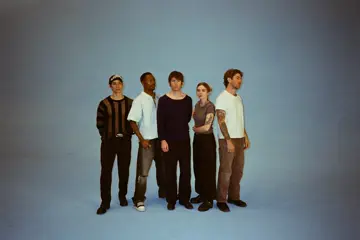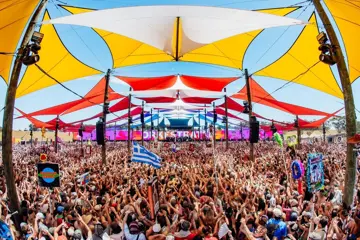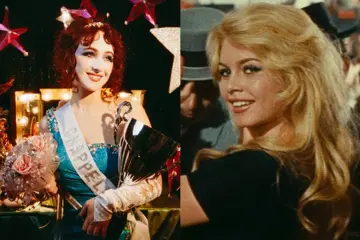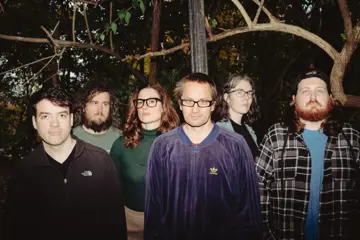1960s counterculture retains strong significance in the collective imagination. It’s not uncommon for people to say that if they had a time machine, they’d transport themselves back to the era of the mini skirt, the British invasion and flower power in Haight-Ashbury.
Melbourne Museum’s Revolutions: Records And Rebels exhibition – here courtesy of London’s V&A – explores the anti-establishment ferment of the time with a display of popular culture relics and representations of various intertwining progressive forces.
Counterculture is said to have first emerged in the UK, with Swinging London its epicentre. It therefore comes as no surprise that The Beatles feature prominently (the London incarnation was titled You Say You Want A Revolution?). The Melbourne exhibition looks at the years 1966 to 1972 and encompasses expressive fashion, the introduction of the contraceptive pill, anti-Vietnam War activism, second-wave feminism and the Black Panther party. There are also examples of counterculture’s Australian embodiment such as the 1967 referendum, Oz magazine and Sunbury Pop Festival.
Much like the V&A’s Bowie retrospective, Revolutions is a stirring sonic experience. A location-responsive headset updates the audio in accordance to where you are in the room, playing a slew of classics from the day like Eve Of Destruction, The Times They Are-A Changin', A Whiter Shade Of Pale, White Rabbit and half a dozen Beatles songs.
Don't miss a beat with our FREE daily newsletter
Standout artefacts include John Lennon’s green suit from the Sgt Pepper’s album cover and the ‘Bed Peace’ and ‘Hair Peace’ placards from Lennon and Yoko Ono’s Amsterdam bed-in, plus one of Pete Townshend’s smashed guitars and a Mary Quant miniskirt. Several quotes jump out from the walls of each room, supplying inspirational context to the pervasive drive for change. There’s even one of Woody Guthrie’s diaries opened to the page where he describes the conception of his famous slogan: “This machine kills fascists.”
It devotes a room to technological and architectural innovation and the space race, but music and fashion feature most prominently. You can rifle through shelves of vinyl throughout and notice the change from folk and pop-rock to psychedelia and heavy rock. At the end of the journey you arrive in the Woodstock room. Michael Wadleigh’s 1970 documentary beams onto the wall, while songs from Canned Heat and Country Joe McDonald reverberate down the halls.
It’d be difficult to cover every aspect of the era and it does feel a bit lacking where jazz music is concerned. One might argue jazz as a revolutionary force had its heyday in an earlier period, but what about Bitches Brew? Coltrane and Coleman?
Revolutions: Records And Rebels is nevertheless a lot of fun and indicates that, while there is a lot of nostalgia attached to the 1960s, it wasn’t all free love and flower power. A lot of people put in a lot of effort to effect substantial change. It should be taken as a reminder that if we want to see a better world, we have to work for it.














